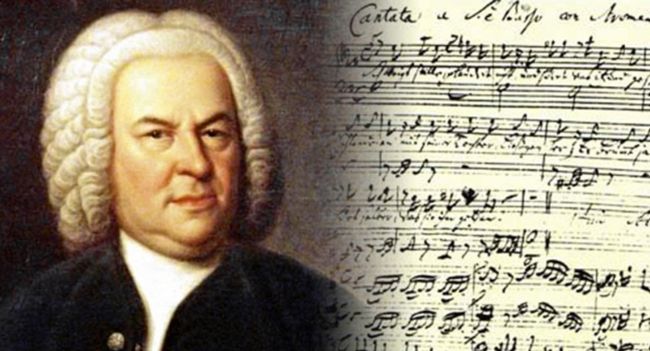Editor’s note: This year marks the 500th anniversary of the Reformation, and this is one in a series of columns to describe the origins, nature and impact of the events and personalities of the Reformation. Previous articles are online at deseretnews.com/faith.
Johann Sebastian Bach was born to a musical family in Eisenach, Germany, in 1685. After holding a variety of important musical positions, he arrived at St. Thomas Church in Leipzig in 1723, remaining there until his death in 1750. But neither the city fathers nor the general public appreciated his genius — many found his work too complicated — and already before he died, he and his music were widely dismissed as old-fashioned and out of style. During his lifetime, he was most highly esteemed as an organ and harpsichord virtuoso rather than as a composer, and, with time, he was only dimly remembered as a gifted keyboard teacher. Many of his compositions were lost; legend reports that some of his manuscripts were used to wrap garbage.
The 19th century, however, saw a “Bach revival” — an important early landmark in that revival was Felix Mendelssohn’s 1829 performance of Bach’s “St. Matthew Passion” in Berlin — and, today, he is generally acknowledged as the greatest musical figure of the Baroque period and, indeed, as among the foremost composers of all time, if not altogether the greatest. (He’s commonly included in a classical music trinity whose other members are Mozart and Beethoven.)
Why discuss Bach in a series of columns dedicated to the 500th anniversary of the Protestant Reformation? Because Bach is the quintessential Protestant composer. He even attended the same school in Eisenach where Martin Luther had been a pupil two centuries before.
His heavily annotated copy of Luther’s illustrious Bible translation (see “Martin Luther’s history-changing translation of the Bible,” published Aug. 18 on deseretnews.com and part of our series) features such handwritten notes as “This chapter is the true foundation of all God-pleasing music” (adjacent to 1 Chronicles 25, which supplies a list of Davidic musicians) and “At a reverent performance of music, God is always at hand with his gracious presence” (at 2 Chronicles 5:13, which describes temple musicians praising God).
Among his compositions, along with chamber music, hundreds of cantatas and secular masterpieces including the “Brandenburg Concertos,” the “Goldberg Variations” and “The Well-Tempered Clavier,” are such works as the “Mass in B Minor” and the “St. John Passion” — both of which, like his “St. Matthew Passion,” were intended as worship services — the “Christmas Oratorio,” the famous “Toccata and Fugue in D Minor” and the “Ascension Cantata.” His cantatas almost always conclude with a chorale based upon a Protestant hymn (for example, Luther’s “A Mighty Fortress is Our God,” which he used multiple times).
Indeed, nearly three quarters of his compositions were written for church use. The “St. Matthew Passion,” for example, was intended for Good Friday. It is a musical treatment of Matthew 26-27. The well-known “Jesu, Joy of Man’s Desiring” comes from the final movement of Bach’s cantata “Herz und Mund und Tat und Leben” (“Heart and Mouth and Deed and Life,” catalogued as “BWV 147”).
All of Bach’s sacred works — and some of his secular creations as well — end with the initials “S.D.G.,” representing the Latin words “Soli Deo Gloria” (“Glory to God alone”). Sometimes he wrote “I.N.J.” (for “In Nomine Jesu” or “In the name of Jesus”) on his sheet music.
Bach has been described as “a theologian who just happened to work with a keyboard.” Some have even termed him “the fifth evangelist,” ranking him (in a sense) with the New Testament gospel writers Matthew, Mark, Luke and John. As one Catholic commentator puts it, Bach is “certainly the most important creative artist given to humanity by the tradition of the Reformation” but also “one whose importance transcends both the German-national and Lutheran-sectarian traditions from which he sprung” (see nationalpost.com/holy-post/protestants-v-catholics-who-has-bragging-rights-for-bach).
Addressing the question “Protestants v. Catholics: who has bragging rights for Bach?” the same writer explains that “Martin Luther is the only other creative artist of the Reformation whose human accomplishments — namely, his crafting of the modern German language in his translation of the Bible, and his establishment of the fundamentals of vernacular, metric hymnody as we know it throughout what is left of Christendom today — can rival those of Bach.”
In a 1969 essay, the late William F. Buckley Jr. commented on a student in inner-city Los Angeles who had complained that his high school’s music curriculum was “imposing middle-class values” on him by teaching him about Bach, “that old, dead punk.” Terming Bach “the greatest genius who ever lived,” Buckley responded that, if one dislikes Bach, “one should then be disturbed about oneself, not about Bach.”
For further reading, see: “Johann Sebastian Bach: ‘The Fifth Evangelist,'” online at christianitytoday.com/history/people/musiciansartistsandwriters/johann-sebastian-bach.html; “Johann Sebastian Bach” online at biography.com/people/johann-sebastian-bach-9194289; “Protestants v. Catholics: who has bragging rights for Bach?” online at nationalpost.com/holy-post/protestants-v-catholics-who-has-bragging-rights-for-bach.
Daniel Peterson founded BYU’s Middle Eastern Texts Initiative, chairs The Interpreter Foundation and blogs on Patheos. William Hamblin is the author of several books on premodern history. They speak only for themselves.
